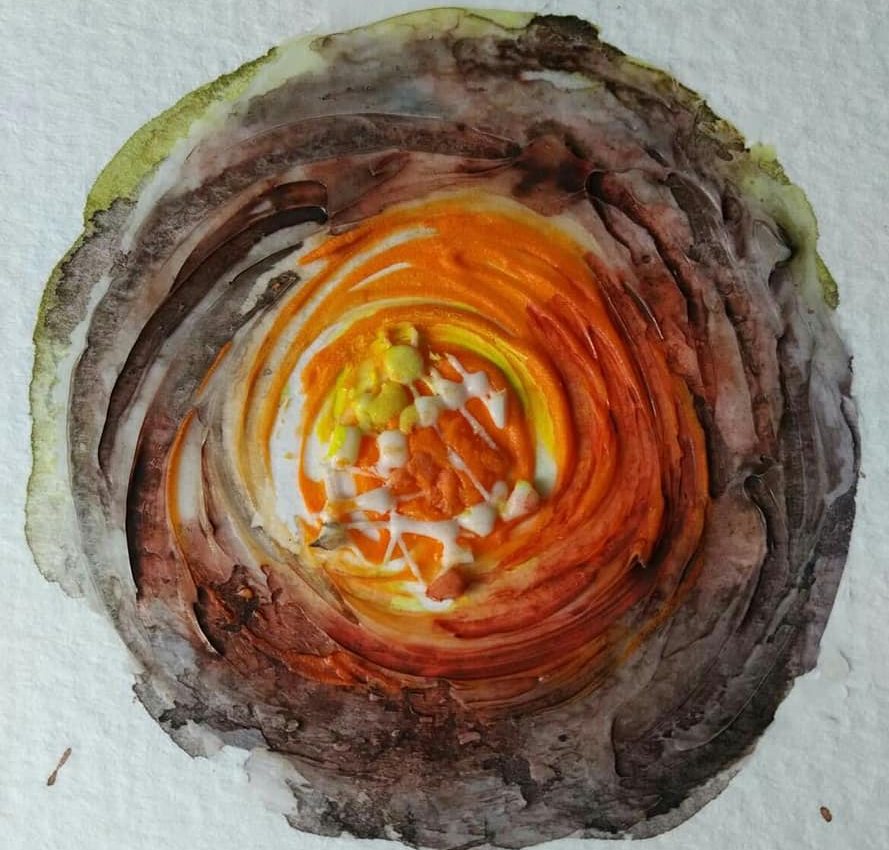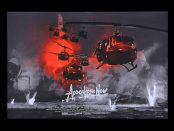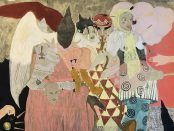[dropcap style=”font-size:100px; color:#992211;”]A[/dropcap]ll artists search for a personal language of expression through which to express a perspective.
Portraiture is not excluded from this statement because of its need to encapsulate the essence of its subject, rather it has a particular need for the language to represent the perspective of the artist with an honesty so that the subject is shown as truly viewed by the artist. The subject is thus viewed darkly through the artist’s lens which becomes the foundation of the work itself. Depiction is enhanced rather than excluded by the particularities of the interplay between artist and subject. The artist’s lens is not the eye but the critical faculties of the soul which, paradoxically, reveals through symbolic layers rather than obscuring. In the case of Heba El Aziz whose portraits use human bacteria as the methodological language to give her portraits life she both uses the processes of her bio art to describe the particularity of her subjects and to layer them within broader social frames of a Middle Eastern existence.
Born in Cairo 1978, El Aziz uses microorganisms in her work as a means of raising issues about identity and culture. Many of her artworks change over time, reflecting human life and thus emphasising the flux and passage of time, which is often referenced but rarely captured in portraits.
Working as a Lecturer in Drawing and Painting at the Faculty of Art Education, University of Helwan, El Aziz travels widely, focussing on the challenge of developing links between the art and science communities across the Arab world. The region has seen significant cultural and philosophical changes and challenges over the last decade. In some ways this reflects how bio art as a new art medium has changed the concept and ethics of Art, and the concept of ‘Identity’.
“I involve bacteria in my portraits. The portrait is more than the facial features and superficial shape, I deal more with the issue of identity. I see the bio portrait as moving from the vision to the concept, from features to identity.
As ideas related to human personal identity; blood type, skin colour and personal features are no longer the symbols of modern identity. Science has become available to commemorate a person through a self-portrait that contains his physical presence with all his details, and not his external image only. This resulted has in the introduction of new terminology in art such as “bio”, “genetic”, and “genetically modified”. Hence, the work of art becomes a laboratory product that converts the articles of life itself into an artistic medium using scientific techniques.
[Using] My bacteria, I use it as paint with the biological components that form my bio identity. My biological existence. I put this body flora in my biological identity. Every work I do, I use my own body flora and that of my family members as well, according to the concept of each work. For example, I did an artwork called My Bio Identity. It was about the 25th of January (2011), during our revolution in Egypt. At that time, I didn’t take part in the event with my physical body, as I was not there. But when I could, I went out and took photos of the people and places, everything. I wanted to be there. So I planted my body flora on these photos. I made my bio [my body] come into existence and the bacteria grew until it covered all the photos, and so it put my existence over the event…[Read more]
Read the full article in Trebuchet 7: Portraits

The aim of art is to represent not the outward appearance of things, but their inward significance. – Aristotle



















